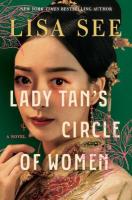
In China during the year of 1469, young Tan Yunxian accepts her fate of being married off at the age of fifteen into an acceptable family to a husband who she has already bound her feet for. Yunxian’s life changes drastically with the matter of only one night when her mother falls ill and eventually dies due to her neglecting her bound feet. Yunxian begins to grieve and harbors an interest in medicine after she is sent to live with her grandparents with her servant and father’s concubine, Miss Zhao. While at her new residence, Yunxian begins to participate in a somewhat forbidden friendship with Meiling, who is destined to become a midwife and is seen as lower than doctors. After Yunxian is married and travels to her husband’s residence with a chilly mother-in-law and gossiping aunts, Yunxian begins to miss her old life greatly. After producing three daughters, who were seen as a disgrace compared to sons, Yunxian is sent to Beijing in order to tend to the Empress while giving birth to her new child. But, as Yunxian meets up with her old friend Meiling in an unfamiliar place, there is more trouble and tragedy that lies ahead for both women of different classes.
Lady Tan’s Circle of Women actually is a sort of true story based on a woman doctor in ancient China so I can’t really judge this book that much. And I don’t really need to because the plot was great and the different medicinal elements as well as culture really did make this novel shine. However, my only issue with this novel would be that there was way too much attention to detail and that the novel dragged on for a little while longer than necessary. There’re so many quotes of Yunxian but most of them would be her explaining medical tools or other stuff that’s not really relevant to the plot as a whole. It’s because of these over explanations that the plot itself seems boring and dull. I think the author tried hard to prove that she was knowledgeable in Chinese aspects of history, but I mostly came to read for entertainment instead of a full-blown history lesson in some chapters. With all that being said, I wouldn’t call this a feminist novel as others have because there aren’t many vast changes from the start and finish of the novel… sons are still much more wanted than daughters, foot binding is still a largely common practice of the time, and wives still hold little to no power against their husbands. While I do know that this book was written in the past, I still would have liked the main female character to at least express her concern about some of the topics above, but she is exactly like the other female characters despite her interest in medicine and the fact that she is “less beautiful” because she has marks on her face due to smallpox. In the end, I did expect a little more than what I got but the writing was still lovely.
